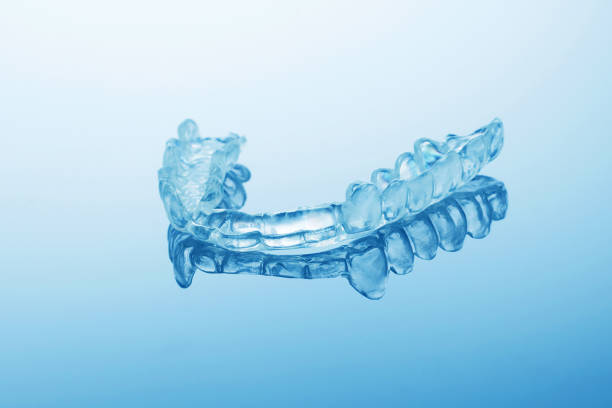Bruxism Treatment with a Splint
Bruxism, the grinding and clenching of teeth, is a common problem that usually occurs unconsciously during sleep, but it can also happen during the day.
The exact cause of bruxism is not entirely known. However, stress appears to be a primary trigger, making bruxism an extremely modern and frequent problem. Additionally, bruxism may be related to occlusal issues such as poorly done fillings and prosthetic work, orthodontic problems, and is often seen in the context of sleep disorders (e.g., sleep apnea).
The main symptoms experienced by bruxism patients include severe sensitivity in the muscles related to chewing, dull morning headaches, reduced mouth opening, characteristic sounds, and pain during the function of the temporomandibular joint (TMJ), often radiating to the ears and neck.
The consequences of bruxism include damage to otherwise healthy dental tissues (from wear to fractures), wear of dental work (crowns, dentures, fillings), worsening of gum problems, increased tooth mobility and sensitivity to cold, injuries to the tongue and cheeks, and the development of severe arthritis and arthralgia.
Diagnosis and proper therapeutic management of bruxism begin with a visit to the dentist. The dentist, as the most appropriate specialist, will take a detailed medical and dental history, and thoroughly examine the patient’s mouth and TMJ to identify any sensitivity on palpation of the masticatory muscles and signs on the teeth and periodontal tissues indicating bruxism.
The primary therapeutic tool for managing bruxism is the construction of a stabilization splint. This is an intraoral orthopedic device that fits onto the teeth of the upper or lower jaw, is quickly accepted, and is used mainly during the night for a period of several weeks or months, depending on the type and intensity of the symptoms. The splint ensures the even distribution of forces on the teeth and relaxation of the area’s muscles by guiding the lower jaw into a more correct position within the joint, thus reducing its strain.
Gradually, the patient adopts this new position as the natural resting position of their jaw even after the end of the treatment. In summary, treatment with intraoral splints is a non-invasive, cost-effective method with very high success rates and significantly contributes to the prevention of dental tissue health and the improvement of our quality of life.
In our clinic, we use advanced dental scanners, 3D printers, and specialized software to create high-precision and quality bruxism splints, maximizing the treatment’s effectiveness.
